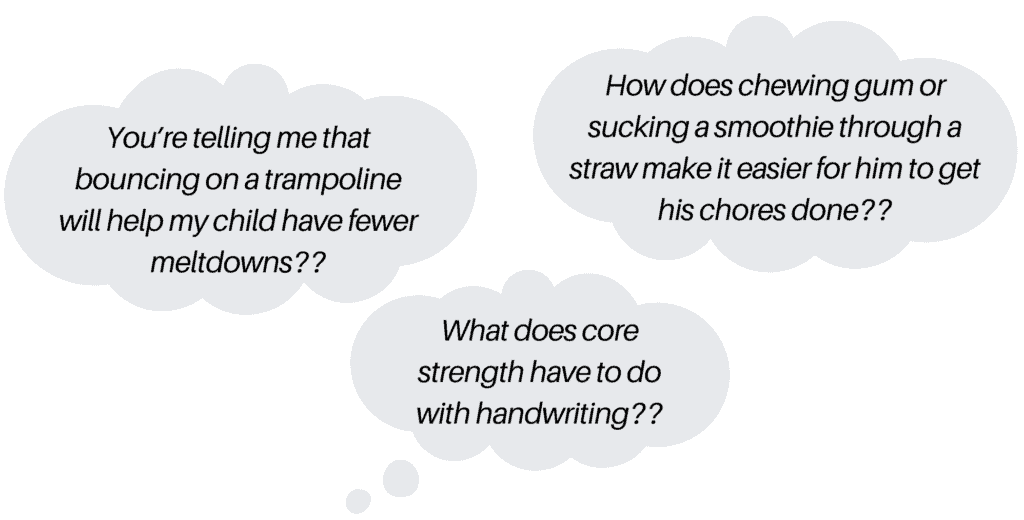This blog post was written by JKP author Jessica Sinarski.
How learning about sensory processing changed… everything.
My brilliant little 4-year-old son was asked to draw a house at preschool and burst into tears. Bursting into tears was a common occurrence for him, as was picky eating, banging into things, difficulty transitioning from one task to the next, slouching posture, and what I came to realize were a whole host of sensory red flags.

Sensory processing difficulties occur when the brain has trouble receiving, interpreting, and responding to information coming in through the senses.
But how does all this relate to not being able to draw a house at preschool?
My eyes were about to be opened to the complexities of the senses!
When I first dipped my toe into the world of sensory processing, I have to admit…it sounded a bit far-fetched.

And yet…there was something here that felt right.
We started doing “steam rollers” along his back and big “super slams” before bed. It was physical and full of laughter, just what you would think would amp up a little kid. Instead, he would sigh and say, “Ahhhh. Now I’m ready for sleeps.”



So I dug in.
Books, research articles, information from respected organizations like the STAR Institute and ATTACh all confirmed that this wacky task of making sense of our senses really matters! We found some quality occupational therapy for my son, which, like so many mental health and wellness services, can be difficult to track down. It made such a big difference!
I kept learning everything I could. I started integrating this newfound sensory lens into my therapy practice and found the same positive results.
As my understanding of sensory processing has deepened over the last 10 years, I have continued to see time and time again how beneficial it is to get to know our sensational senses.

But it’s complicated!
There’s no one-size-fits-all, here’s-a-quick-worksheet solution! It is not widely understood and often overlooked as a factor in children’s behavior.
If you’ve been around me at all, you know I’m a little obsessed with the brain. When we understand what is going on in the brain, it makes life so much easier!!
Our sensory systems are sending eleven million bits of information to the brain every second! Even though we are only conscious of, at most, 40–50 of those bits, it is easy to see how the brain can get flooded. When overwhelmed, the brain tends to produce some mixed-up feelings and frustrating behaviors, those “downstairs brain moments” you see in the Riley the Brave books.
When children do not behave the way we expect them to, it is often because they can’t… yet. Fortunately, that is not the end of the story. When we help children understand what their senses need, we are literally helping them grow their brains, developing their capacity to “feel and deal” instead of flipping into fight / flight / freeze.
I wrote Riley the Brave’s Sensational Senses to help kids (and grown-ups) on their journey to befriend their senses.

All these senses have to work together for us to feel safe, calm, and in control!
That’s why super slams helped my 4-year-old get to sleep, and 2 minutes on the trampoline can help him finish his math work. It’s why building core strength gave him the ability to work on his hand-writing, and chewing gum still helps him focus. Getting all the senses working together allows his brain get the information it needs so he can learn, grow, and thrive!
Ready to jump in?
Putting on a sensory lens has been life-changing for my family and the families and schools that I have worked with, but getting started can be difficult! With it’s brightly colored pages and clever visuals, Riley the Brave’s Sensational Senses makes it easy!

And just like all my books, there is some user-friendly brain science in the back to make your life a little easier. Don’t be surprised if the brave cubs in your life want to read right through to the end with you!
Riley the Brave’s Sensational Senses is now available! Check out the entire series here!